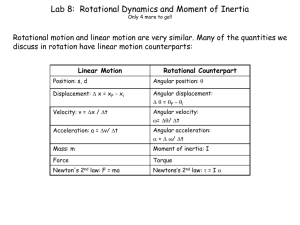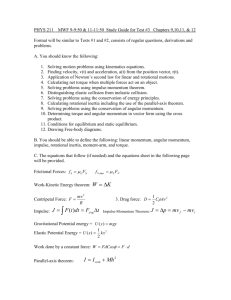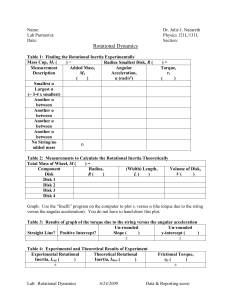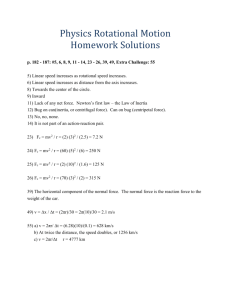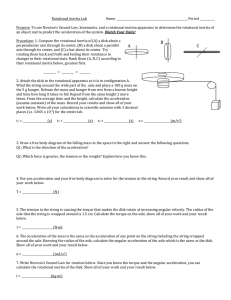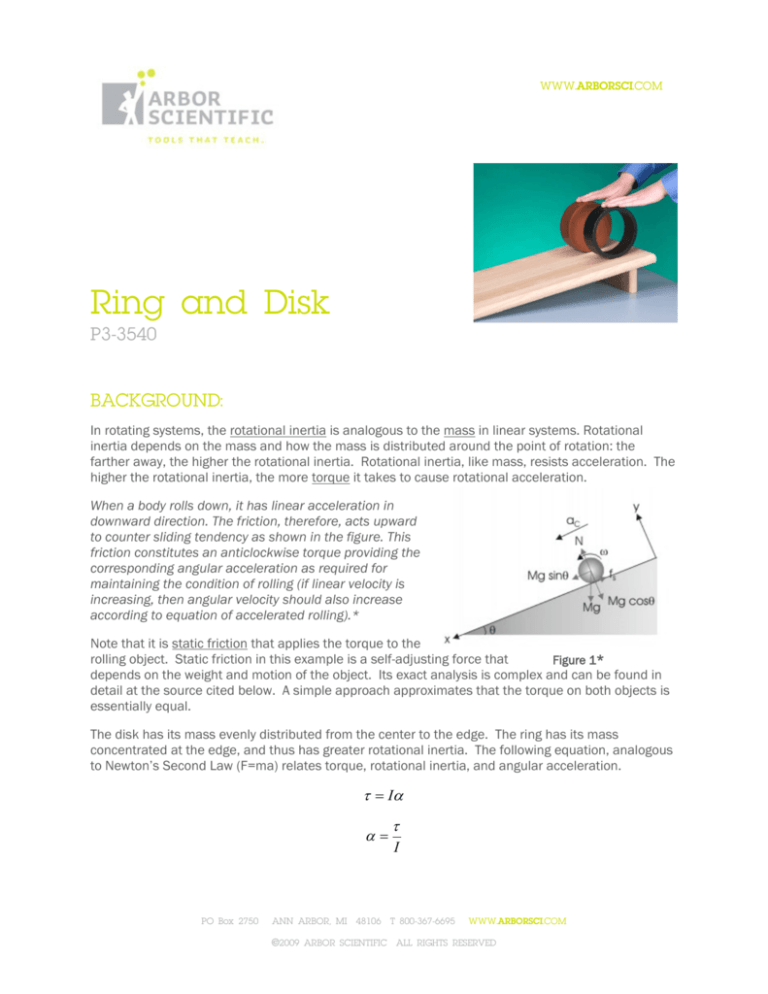
WWW.ARBORSCI.COM
Ring and Disk
P3-3540
BACKGROUND:
In rotating systems, the rotational inertia is analogous to the mass in linear systems. Rotational
inertia depends on the mass and how the mass is distributed around the point of rotation: the
farther away, the higher the rotational inertia. Rotational inertia, like mass, resists acceleration. The
higher the rotational inertia, the more torque it takes to cause rotational acceleration.
When a body rolls down, it has linear acceleration in
downward direction. The friction, therefore, acts upward
to counter sliding tendency as shown in the figure. This
friction constitutes an anticlockwise torque providing the
corresponding angular acceleration as required for
maintaining the condition of rolling (if linear velocity is
increasing, then angular velocity should also increase
according to equation of accelerated rolling).*
Note that it is static friction that applies the torque to the
rolling object. Static friction in this example is a self-adjusting force that
Figure 1*
depends on the weight and motion of the object. Its exact analysis is complex and can be found in
detail at the source cited below. A simple approach approximates that the torque on both objects is
essentially equal.
The disk has its mass evenly distributed from the center to the edge. The ring has its mass
concentrated at the edge, and thus has greater rotational inertia. The following equation, analogous
to Newton’s Second Law (F=ma) relates torque, rotational inertia, and angular acceleration.
I
PO Box 2750
I
ANN ARBOR, MI 48106 T 800-367-6695
WWW.ARBORSCI.COM
©2009 ARBOR SCIENTIFIC ALL RIGHTS RESERVED
The ring’s larger rotational inertia causes its angular acceleration to be lower. Therefore, when
accelerated by the same torque as the solid disc, it loses the race.
INSTRUCTIONS:
1. Construct a simple inclined plane.
2. Hold the two wheels at the top and ask students to predict which will reach the bottom first.
Note that the wheels are the same mass and the same radius.
3. Release the wheels from the same point and observe that the solid disk reaches the bottom
first.
BIBLIOGRAPHY:
* Singh, S. Rolling along an incline, Connexions Web site. http://cnx.org/content/m14312/1.9/, Apr
17, 2007.
RELATED PRODUCTS:
Rotating Platform (P3-3510). 40cm diameter platform for use with hand weights or our bicycle
wheel for rotational studies.
Rotating Lab Stool (P3-3610). 64cm high stool with 30cm diameter rotating seat.
PO Box 2750
ANN ARBOR, MI 48106 T 800-367-6695
WWW.ARBORSCI.COM
©2009 ARBOR SCIENTIFIC ALL RIGHTS RESERVED

